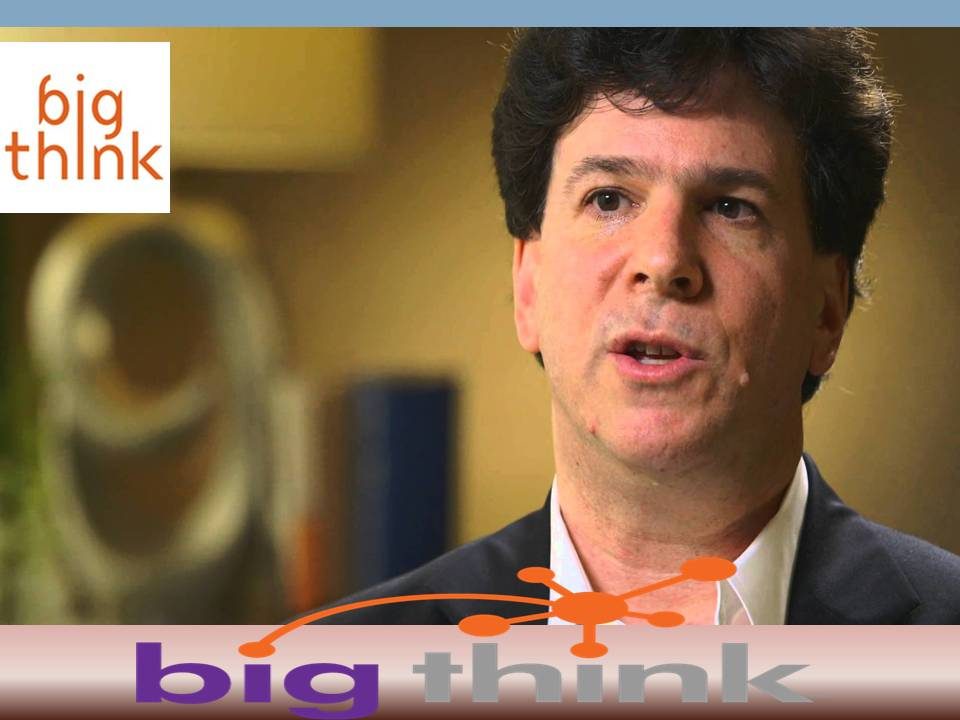Those among us who fear world domination at the metallic hands of super-intelligent AI have gotten a few steps ahead of themselves. We might actually be outsmarted first by fairly dumb AI, says Eric Weinstein.
Humans rarely create products with a reproductive system—you never have to worry about waking up one morning to see that your car has spawned a new car on the driveway (and if it did: cha-ching!), but artificial intelligence has the capability to respond to selective pressures, to self-replicate and spawn daughter programs that we may not easily be able to terminate. Furthermore, there are examples in nature of organisms without brains parasitizing more complex and intelligent organisms, like the mirror orchid. Rather than spend its energy producing costly nectar as a lure, it merely fools the bee into mating with its lower petal through pattern imitation: this orchid hijacks the bee’s brain to meet its own agenda. Weinstein believes all the elements necessary for AI programs to parasitize humans and have us serve its needs already exists, and although it may be a “crazy-sounding future problem which no humans have ever encountered,” Weinstein thinks it would be wise to devote energy to these possibilities that are not as often in the limelight.
“There are a bunch of questions next to or adjacent to general artificial intelligence that have not gotten enough alarm because, in fact, there’s a crowding out of mindshare. I think that we don’t really appreciate how rare the concept of selection is in the machines and creations that we make. So in general, if I have two cars in the driveway I don’t worry that if the moon is in the right place in the sky and the mood is just right that there’ll be a third car at a later point, because in general I have to go to a factory to get a new car. I don’t have a reproductive system built into my sedan. Now almost all of the other physiological systems—what are there, perhaps 11?—have a mirror.
So my car has a brain, so it’s got a neurological system. It’s got a skeletal system in its steel, but it lacks a reproductive system.So you could ask the question: are humans capable of making any machines that are really self-replicative? And the fact of the matter is that it’s very tough to do at the atomic layer but there is a command in many computer languages called Spawn. And Spawn can effectively create daughter programs from a running program.
Now as soon as you have the ability to reproduce you have the possibility that systems of selective pressures can act because the abstraction of life will be just as easily handled whether it’s based in our nucleotides, in our A, C, Ts and Gs, or whether it’s based in our bits and our computer programs. So one of the great dangers is that what we will end up doing is creating artificial life, allowing systems of selective pressures to act on it and finding that we have been evolving computer programs that we may have no easy ability to terminate, even if they’re not fully intelligent.
Further if we look to natural selection and sexual selection in the biological world we find some very strange systems, plants or animals with no mature brain to speak of effectively outsmart species which do have a brain by hijacking the victim species’ brain to serve the non-thinking species. So, for example, I’m very partial to the mirror orchid which is an orchid whose bottom petal typically resembles the female of a pollinator species. And because the male in that pollinator species detects a sexual possibility the flower does not need to give up costly and energetic nectar in order to attract the pollinator. And so if the plant can fool the pollinator to attempt to mate with this pseudo-female in the form of its bottom petal, it can effectively reproduce without having to offer a treat or a gift to the pollinator but, in fact, parasitizes its energy. Now how is it able to do this? Because if a pollinator is fooled then that plant is rewarded. So the plant is actually using the brain of the pollinator species, let’s say a wasp or a bee, to improve the wax replica, if you will, which it uses to seduce the males.”

Eric Weinstein is a Mathematician, Economist, and a frequent public speaker on a variety of subjects within the sciences. Currently, he is Managing Director of Thiel Capital in San Francisco and was formerly a Co-Founder and Principal of the Natron Group in Manhattan as well as a Visiting Research Fellow at Oxford University in the Mathematical Institute. Since completing a PhD dissertation in the Mathematics Department at Harvard in 1992 he has held research positions in Mathematics, Physics, and Economics departments (at MIT, Hebrew University, and Harvard respectively). He delivered the Special Simonyi Lectures at Oxford University in 2013 putting forth a theory he termed “Geometric Unity” to unify the twin geometries (Riemannian and Ehresmannian) thought to ground the two most fundamental physical theories (General Relativity and the so-called Standard Model of particle theory respectively).
Within Economics, Dr. Weinstein has focused on a variety of topics with an emphasis on foundations. In the early 1990s he introduced Gauge Theoretic methods into neo-classical theory with Co-author P. Malaney. More recently, he has called for an Economic Manhattan Project to return the field to sound fundamental thinking with the stated goal of making it interoperable with its related scientific sibling subjects. In 2008 he co-organized the Perimeter Institute conference on Economics to this end during the financial crisis bringing together experts from a variety of fields to focus on improving the scientific status of economic theory. In Finance, his research with A. Abdulali on valuation perversities for Mortgage Backed Securities appeared in Risk in 2002 and was among the earliest in the literature to call attention to the dangers posed by such illiquid securities. In the area of scientific innovation, Dr. Weinstein’s work has taken the form of economic history, laying much of the responsibility for the problems in attracting Americans to Scientific and Engineering careers at the doorstep of leading scientific organizations engaged in the manipulation of labor market signals to trainees and entrants. In the related area of labor market theory, Dr.Weinstein’s 2002 paper published in the ILR called for and constructed a canonical Coasian market solution to problems of immigration.




Tһank you, I have recently been looking for information aρproximately this subject for a while and yours is the greatest
I’ve Ԁiscovered till now. Howеver, what about the bottom line?
Are you sure aboᥙt the source?